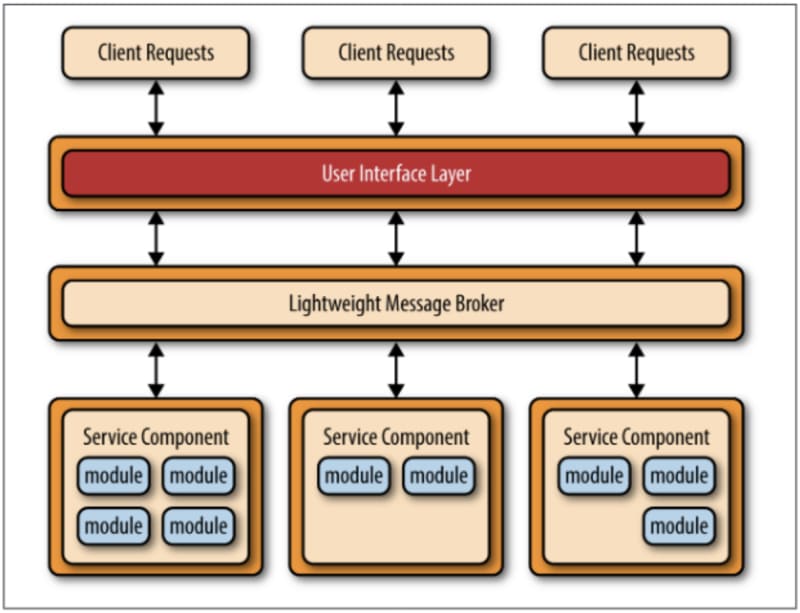Join Me
Follow me on Twitter and Linkedin for more Career, Leadership and Growth advice.
Intro
Microservices architecture is a software design approach that breaks down a large, monolithic application into smaller, independent services that can be developed, deployed, and scaled separately. This allows for greater flexibility and scalability, as well as easier maintenance and testing.
 Source: Software Architecture Patterns (Mark Richards)
Source: Software Architecture Patterns (Mark Richards)
Advantages
The main advantage of using a microservices architecture is that it allows for a high degree of flexibility and scalability in the system. Because the different services are independent and can be deployed and scaled separately, it is easy to make changes or add new functionality to one service without affecting the others. Additionally, different services can be built using different technologies, allowing developers to choose the best tool for the job.
Another advantage of microservices architecture is that it promotes isolation of failures. Because the services are independent, a failure in one service does not affect the other services, allowing the system to continue functioning. Additionally, it allows for easy testing, and when the system is divided into small services, it is easier to identify and fix bugs.
Also, it's worth mentioning that Microservices architecture suits well in cloud-native deployments as it allows for easy scaling, deployment, and management of services in a distributed environment.
Disadvantages
The main disadvantage of using a microservices architecture is that it can add complexity to the system. Because the different services are independent, communication between them can be challenging, and it requires careful planning and coordination. Additionally, it can be difficult to design the services in a way that ensures that they are loosely coupled and don't end up creating dependencies between them.
Wrap up
In conclusion, Microservices architecture is a powerful tool for building large, complex software systems. It allows for a high degree of flexibility and scalability, and it promotes isolation of failures. However, it also requires careful planning and coordination and can add complexity to the system. Microservices architecture is suitable for systems that require high scalability, maintainability, and the ability to handle a large number of users. Examples of systems that can benefit from this architecture are: e-commerce platforms, social media platforms, and online marketplaces.
Join Me
Follow me on Twitter and Linkedin for more Career, Leadership and Growth advice.








Top comments (0)